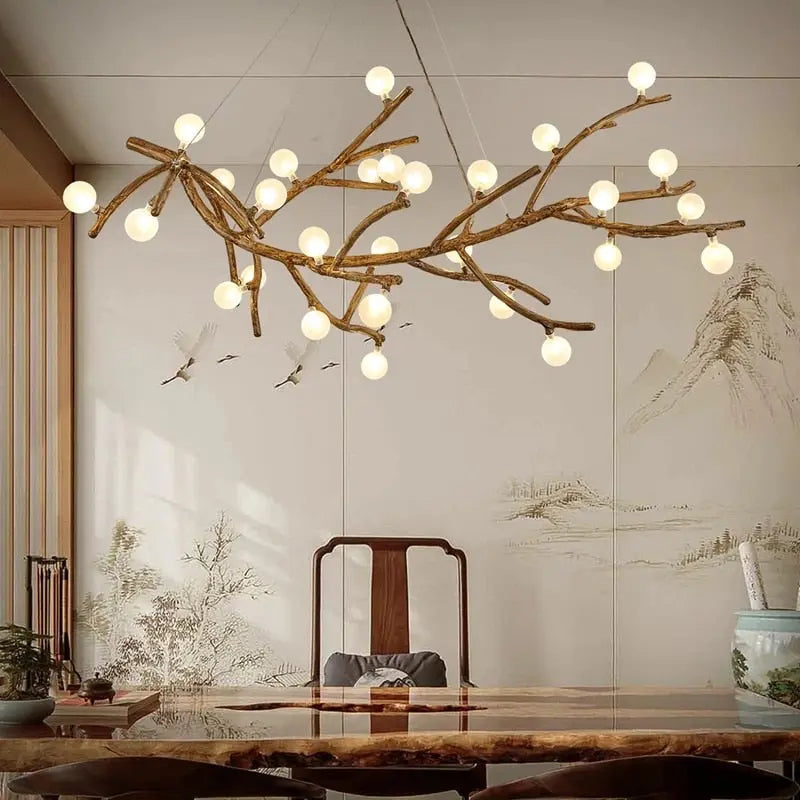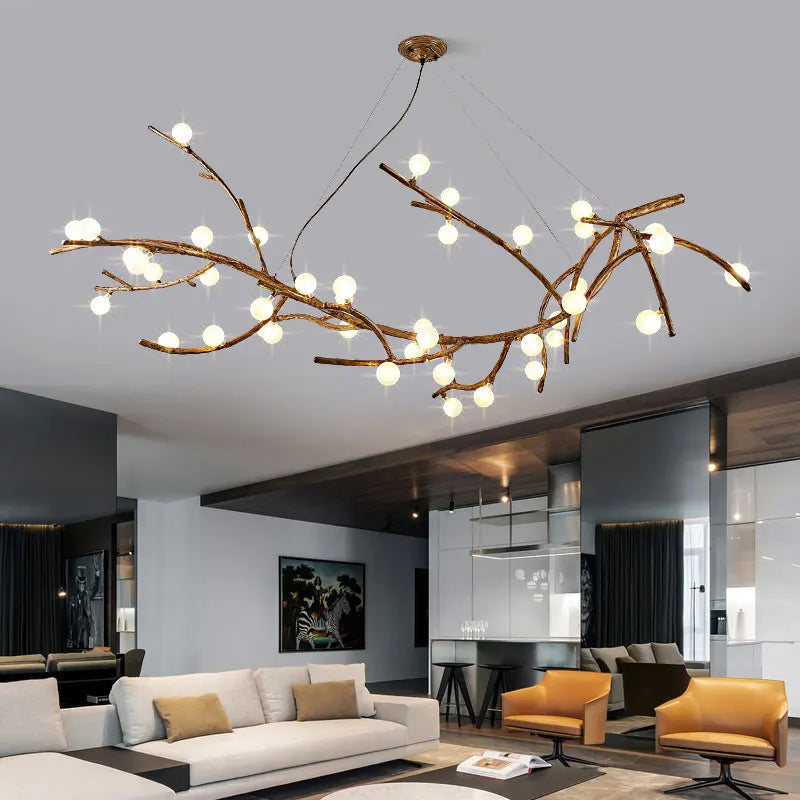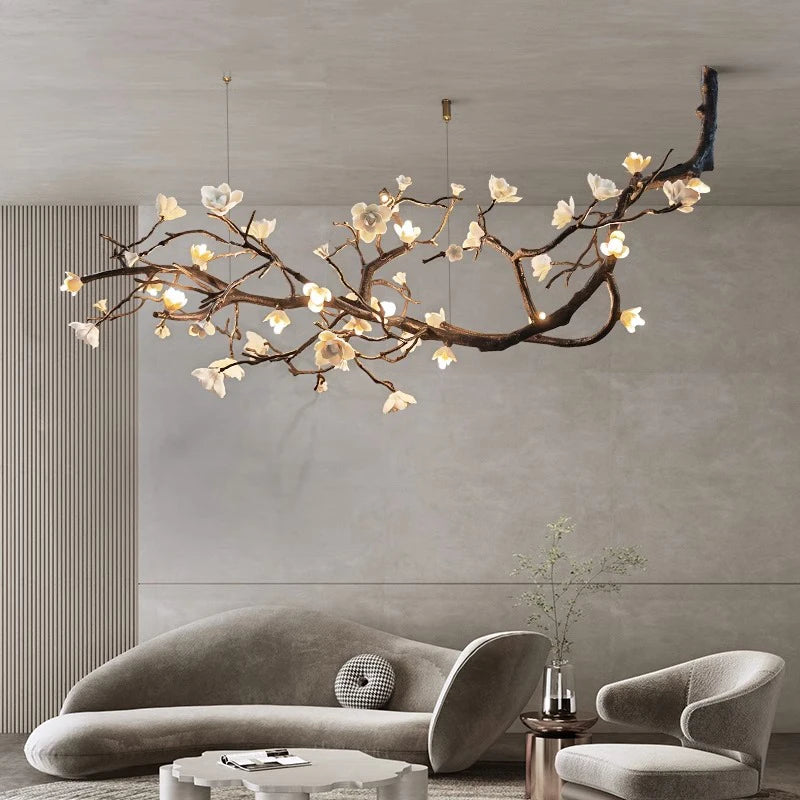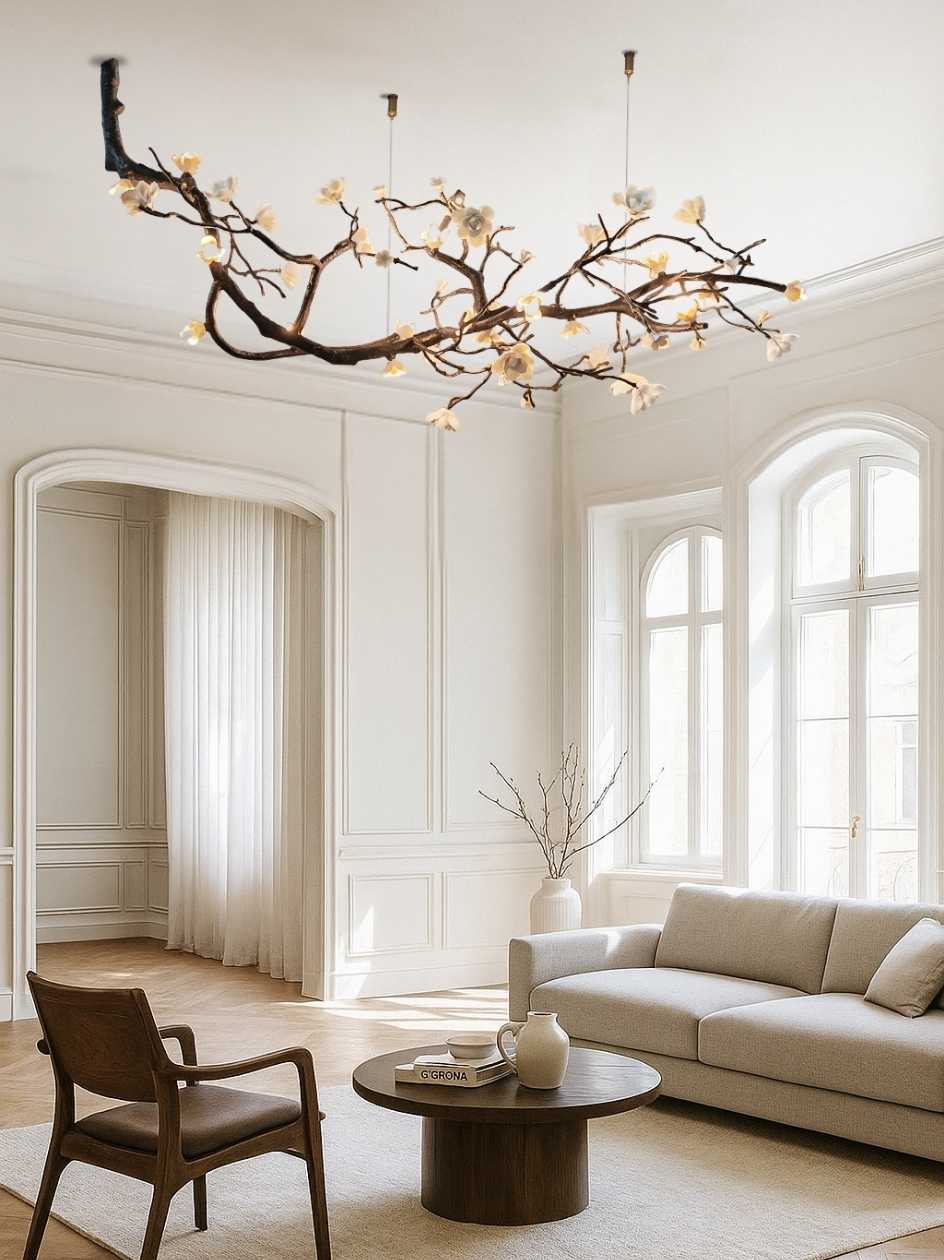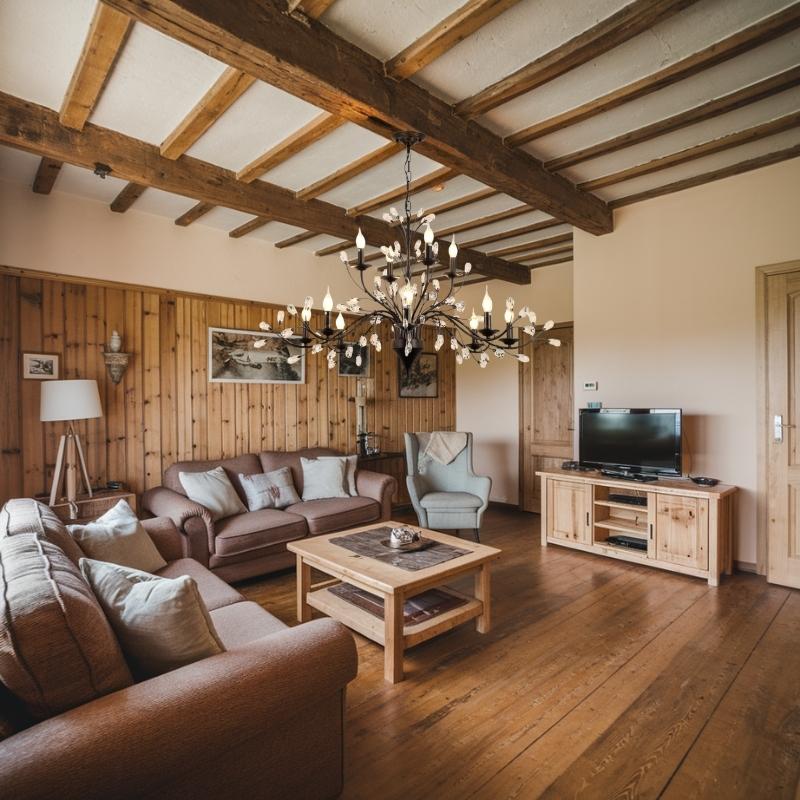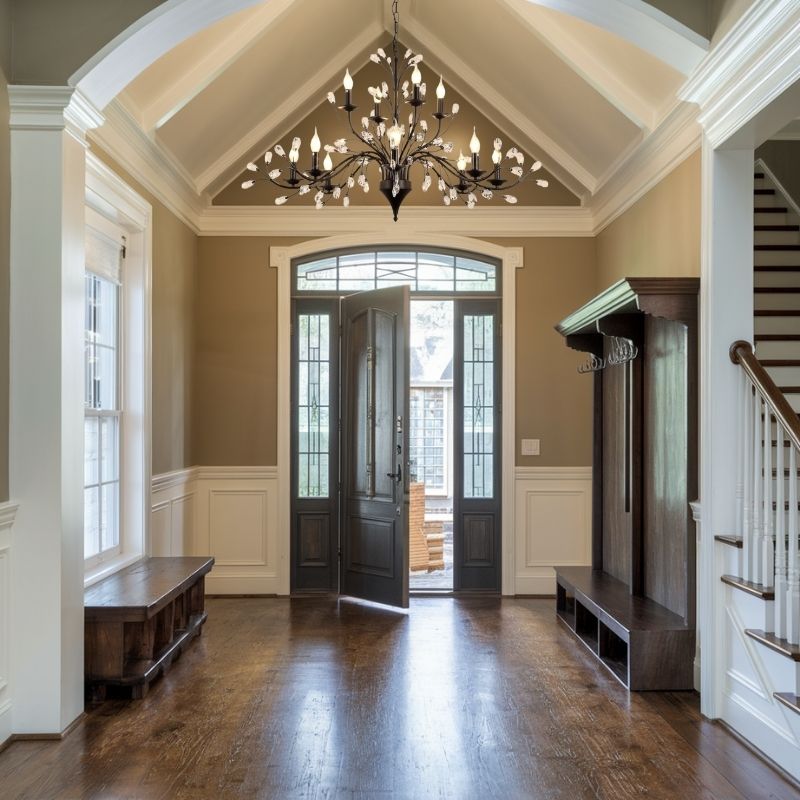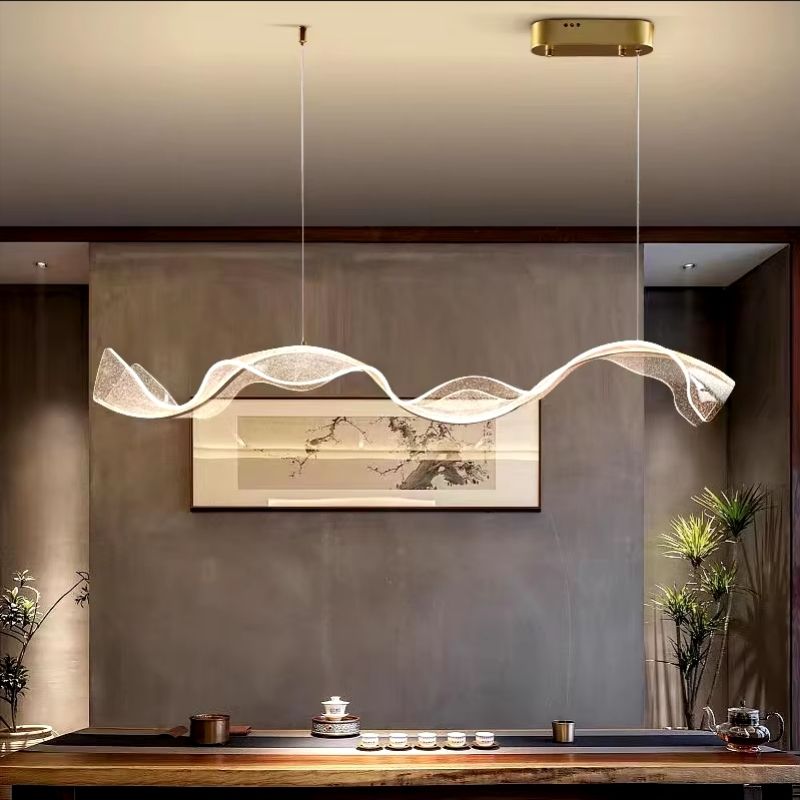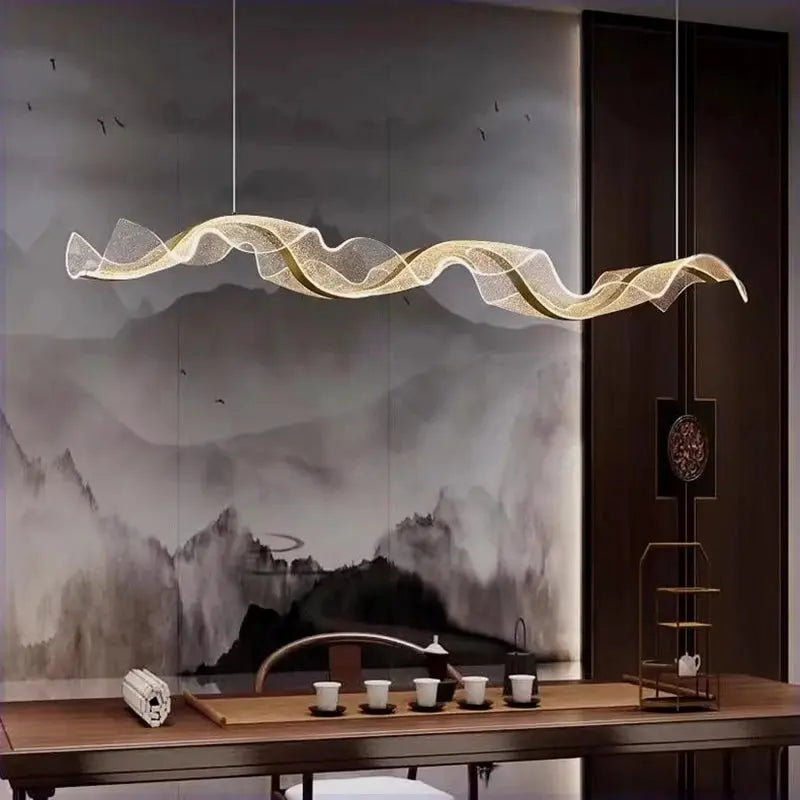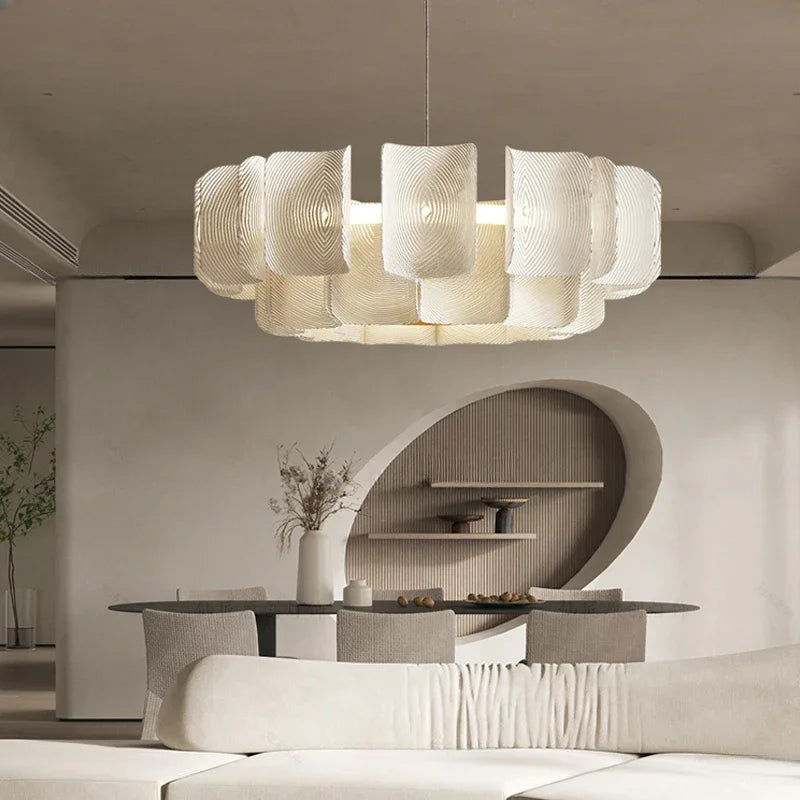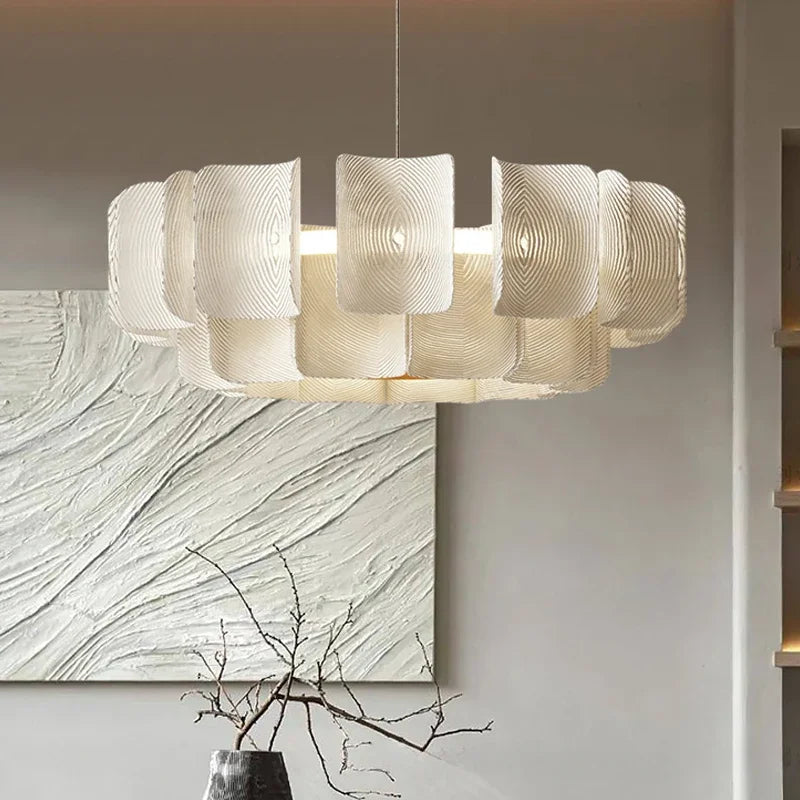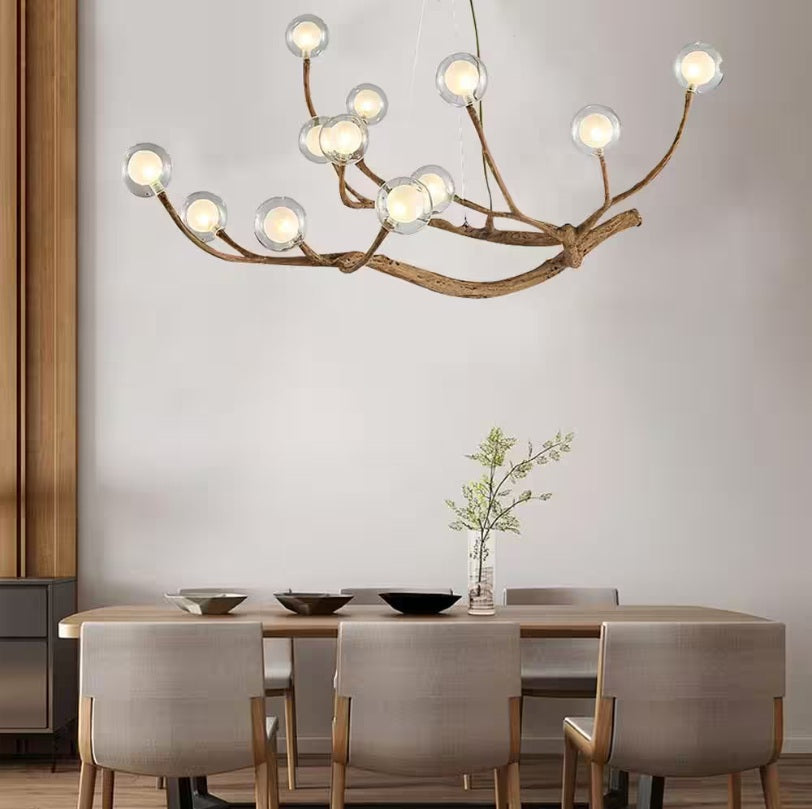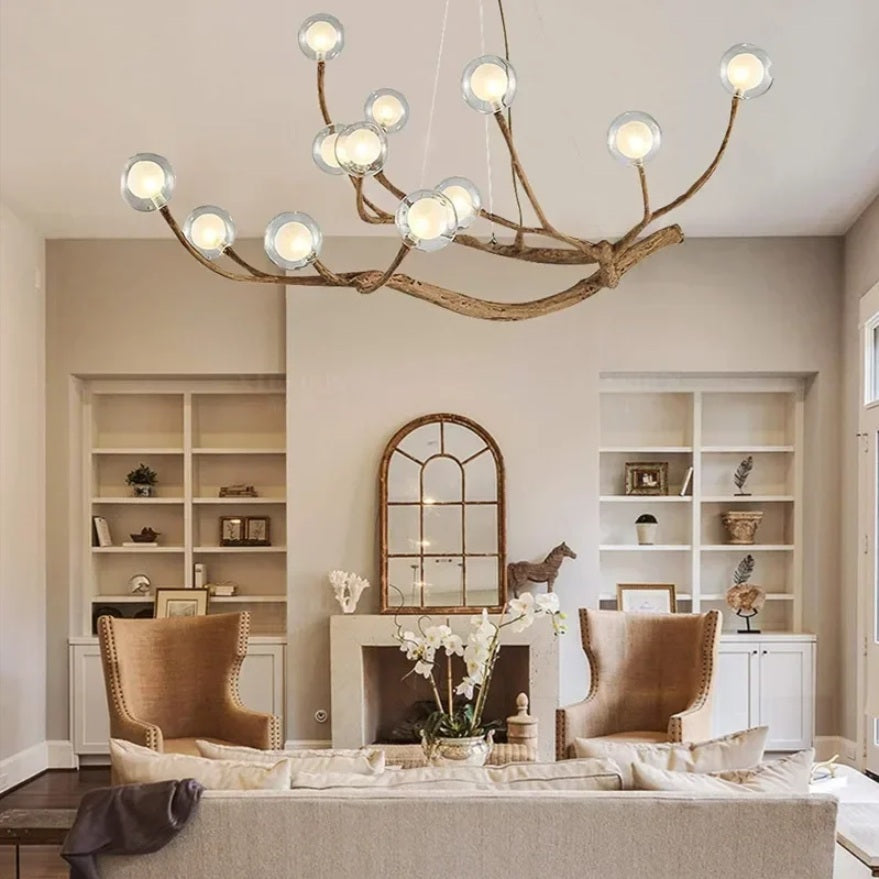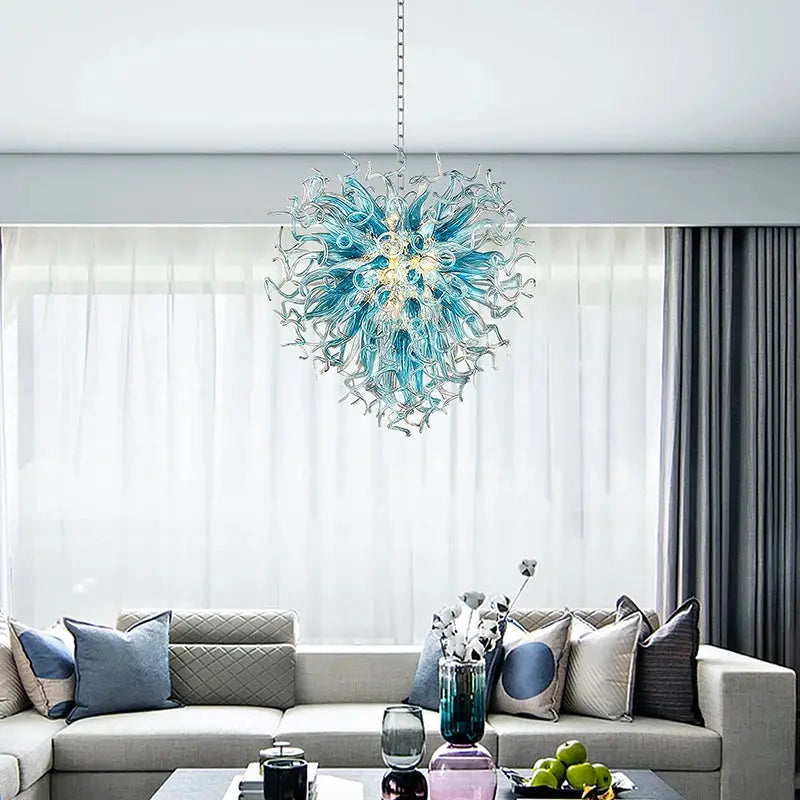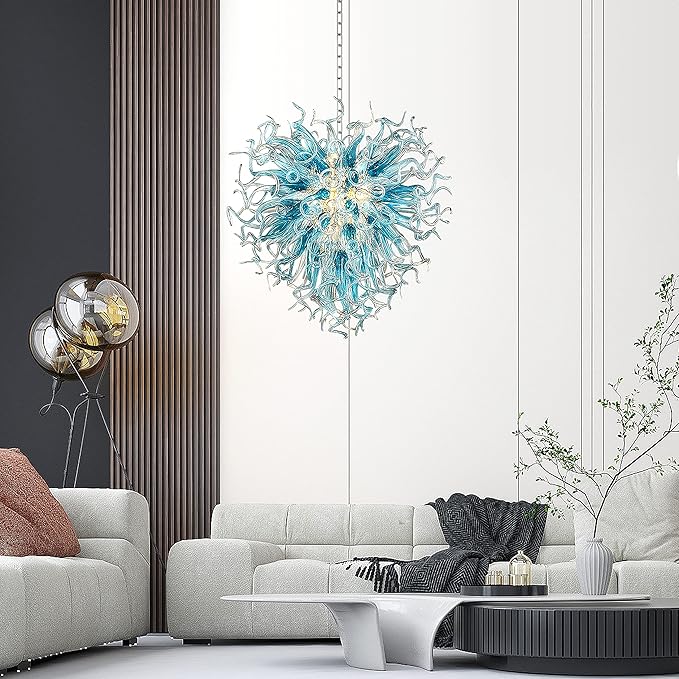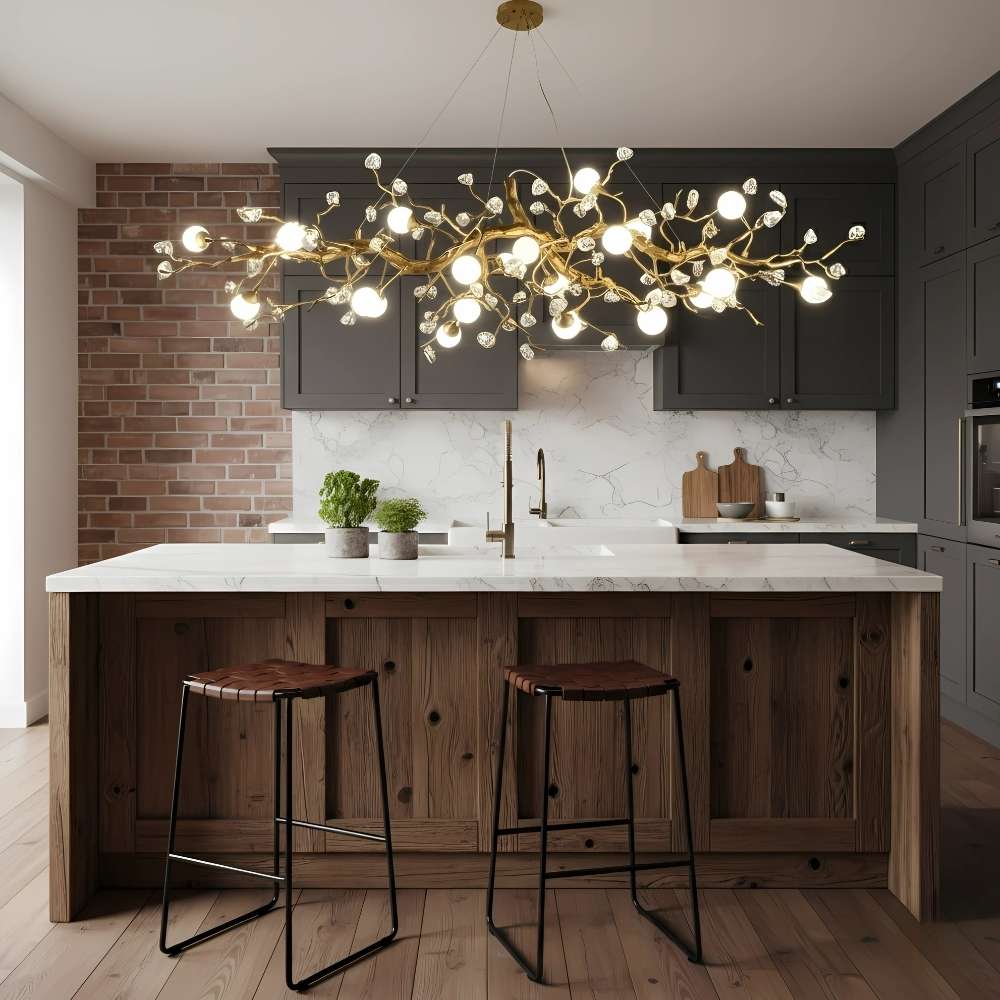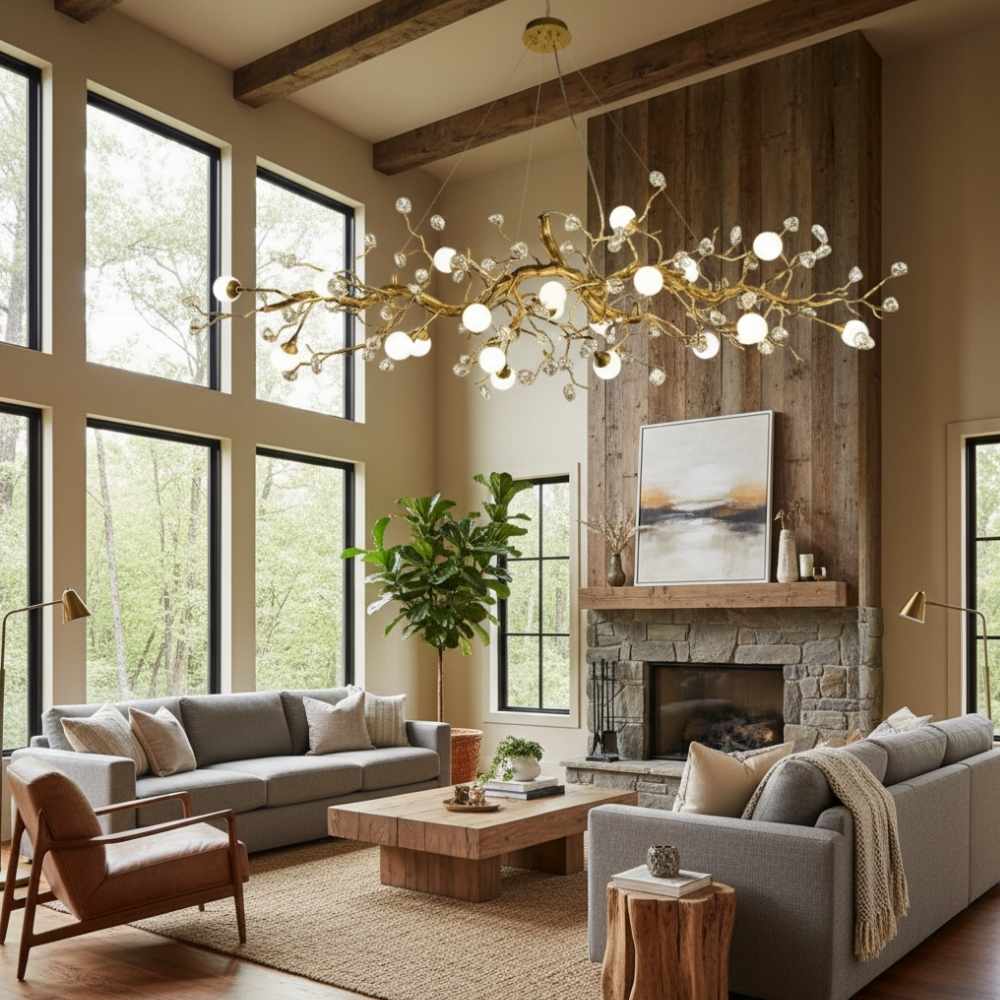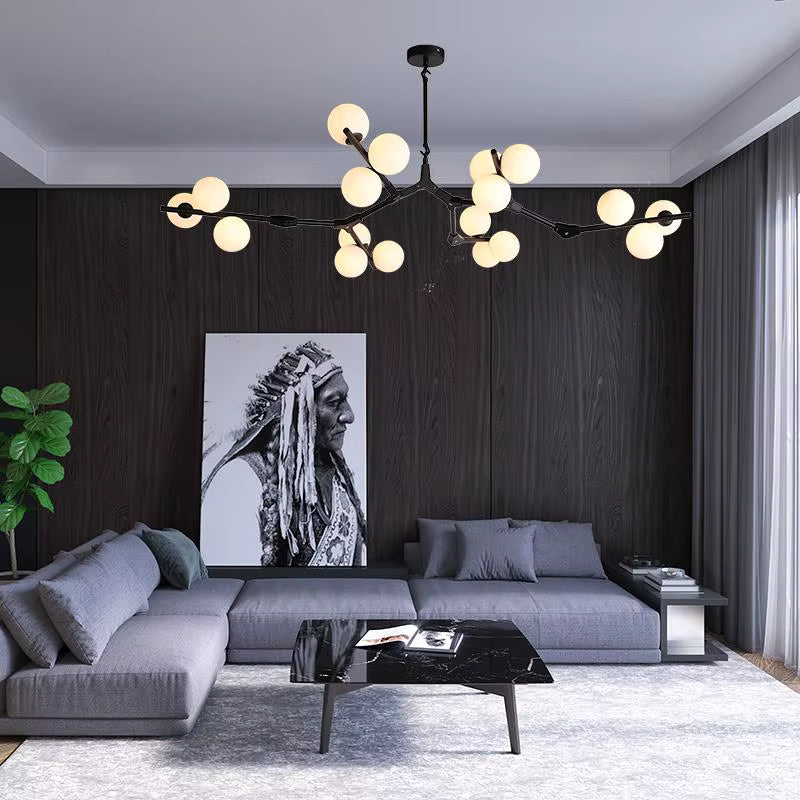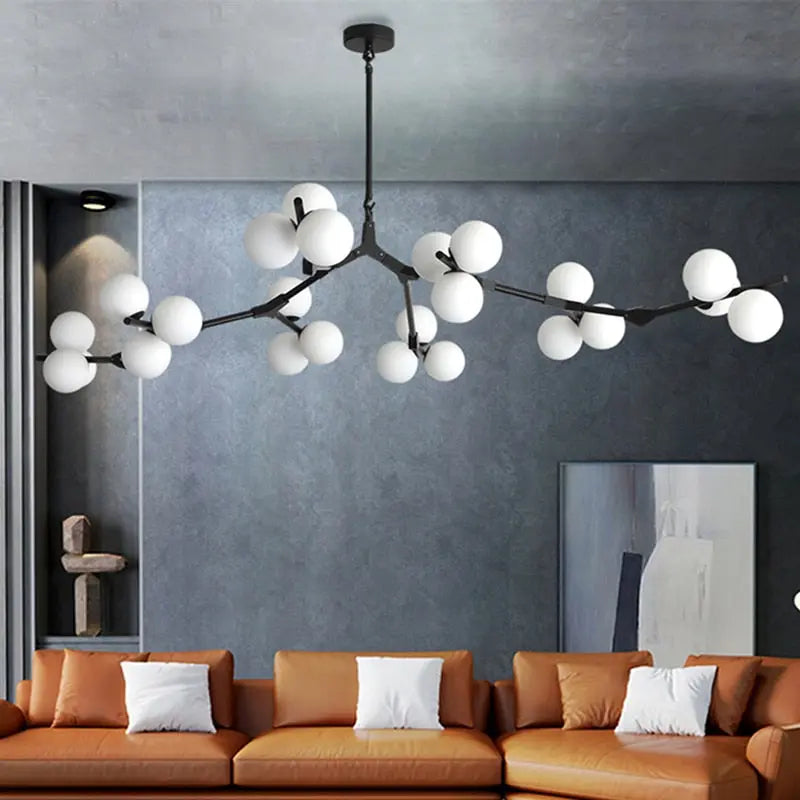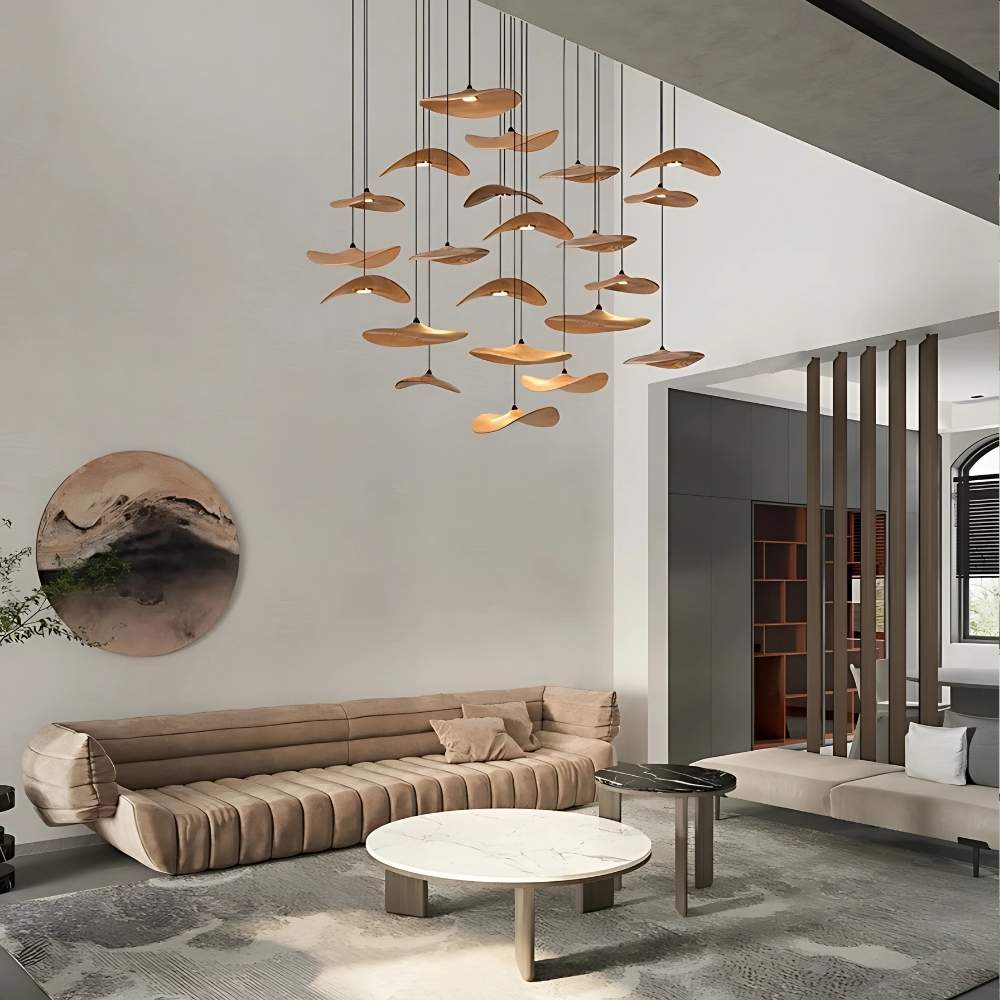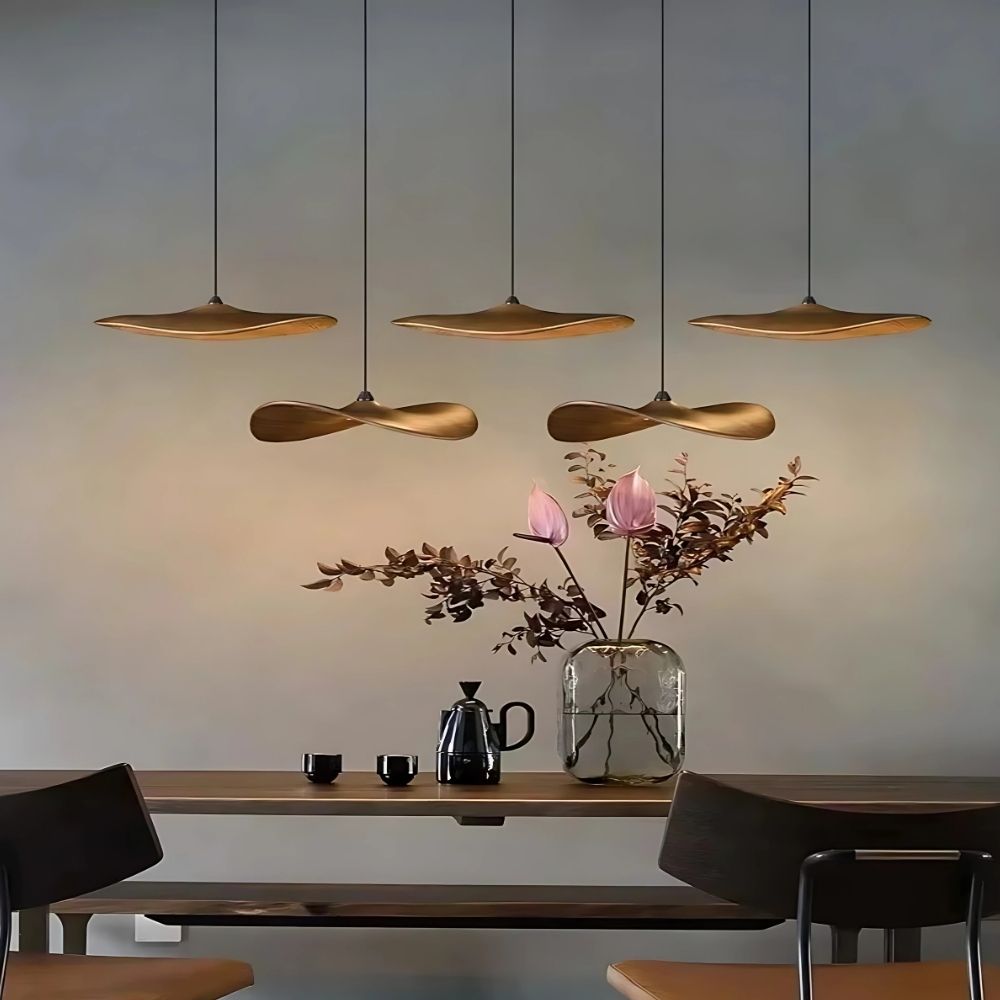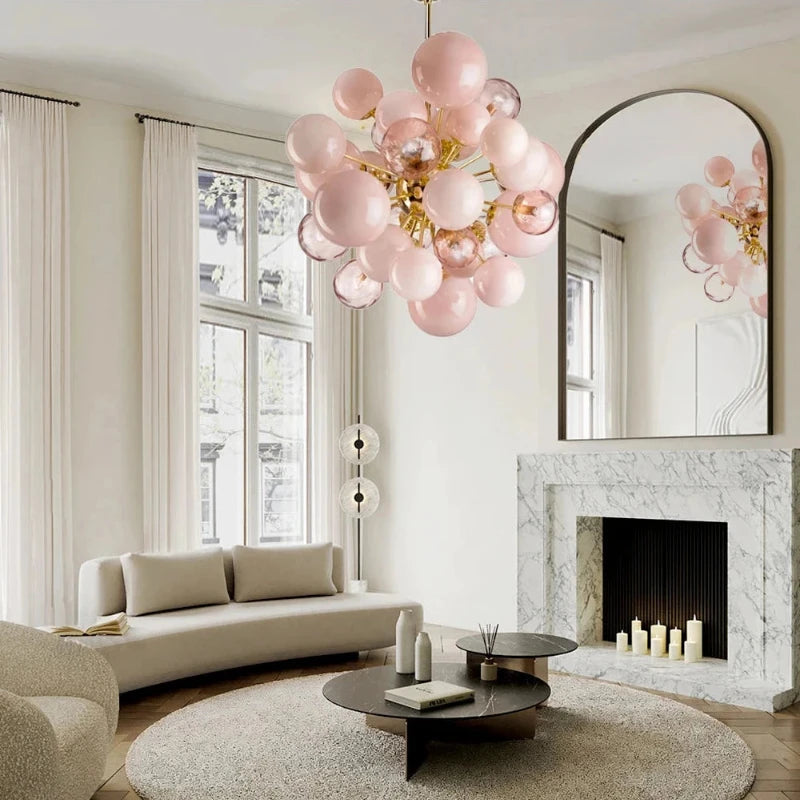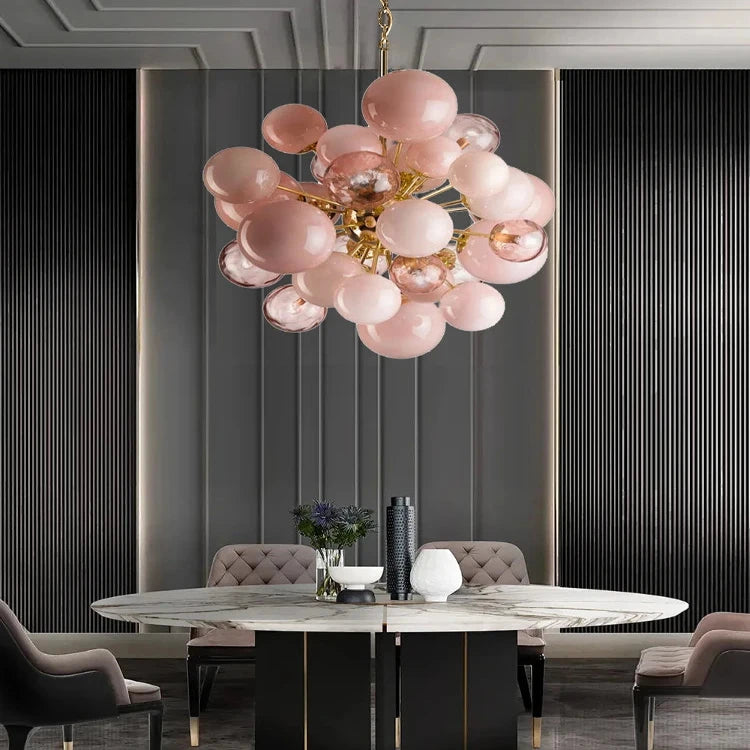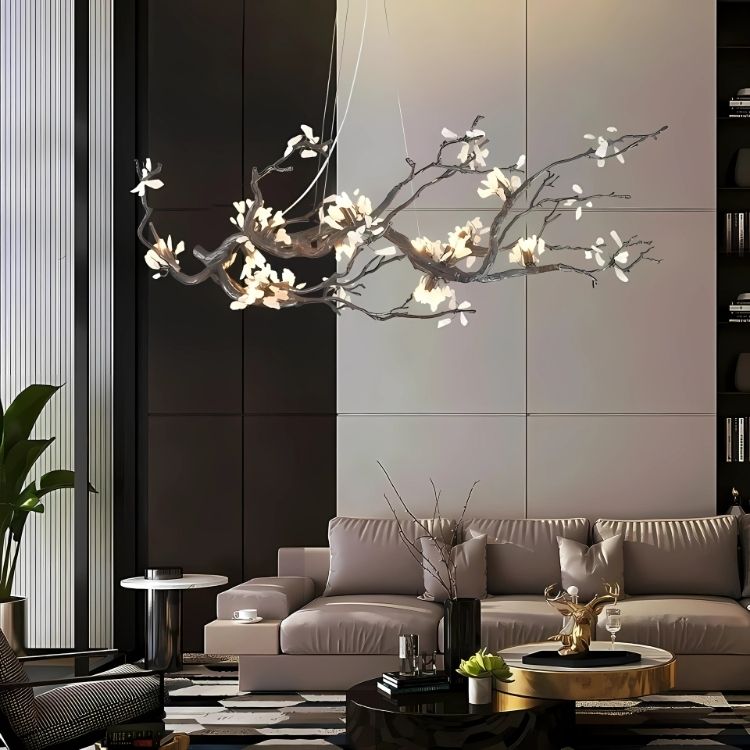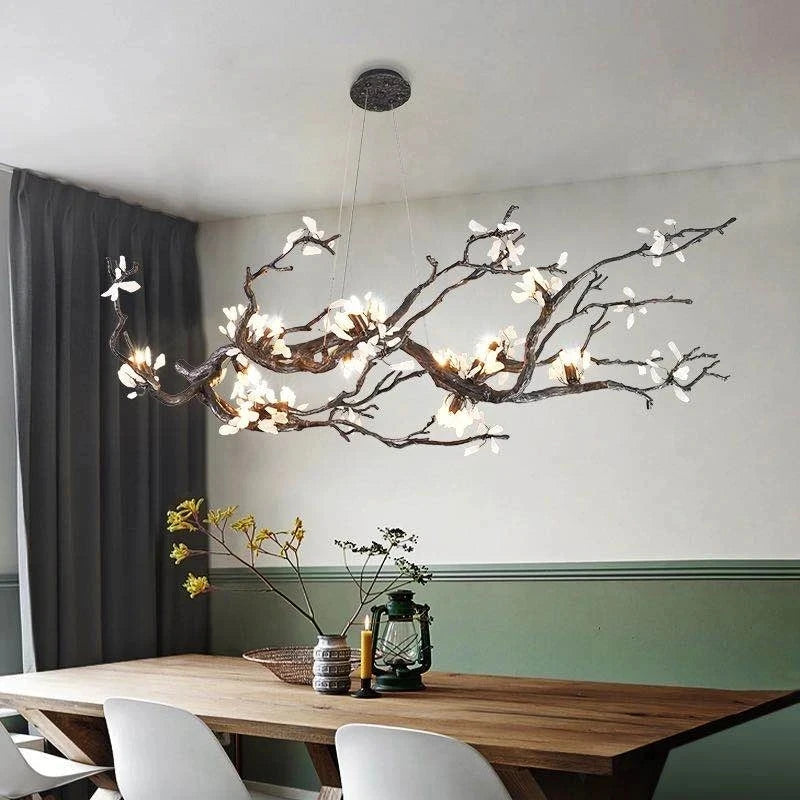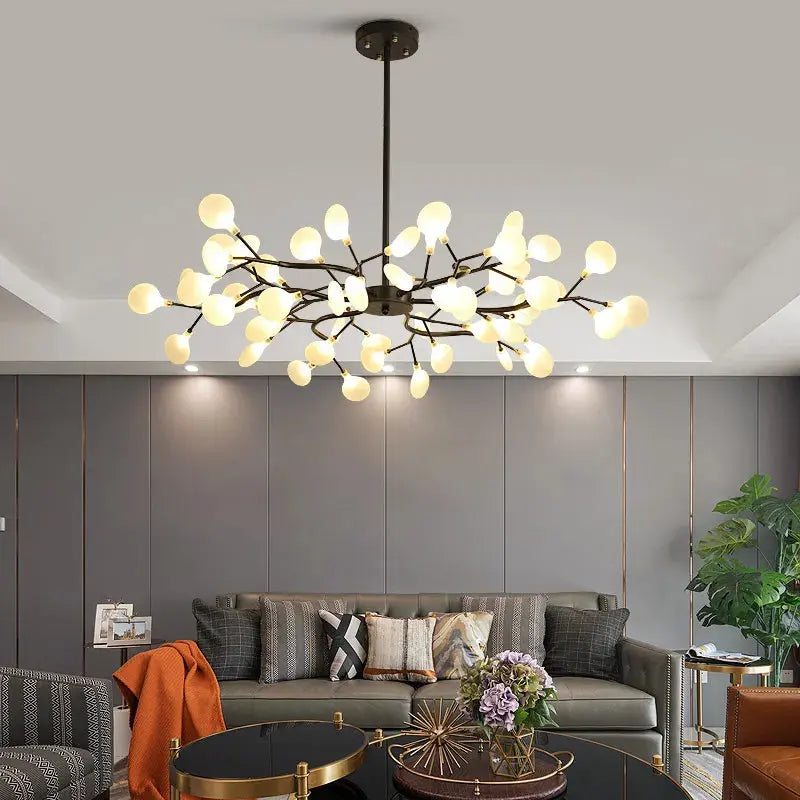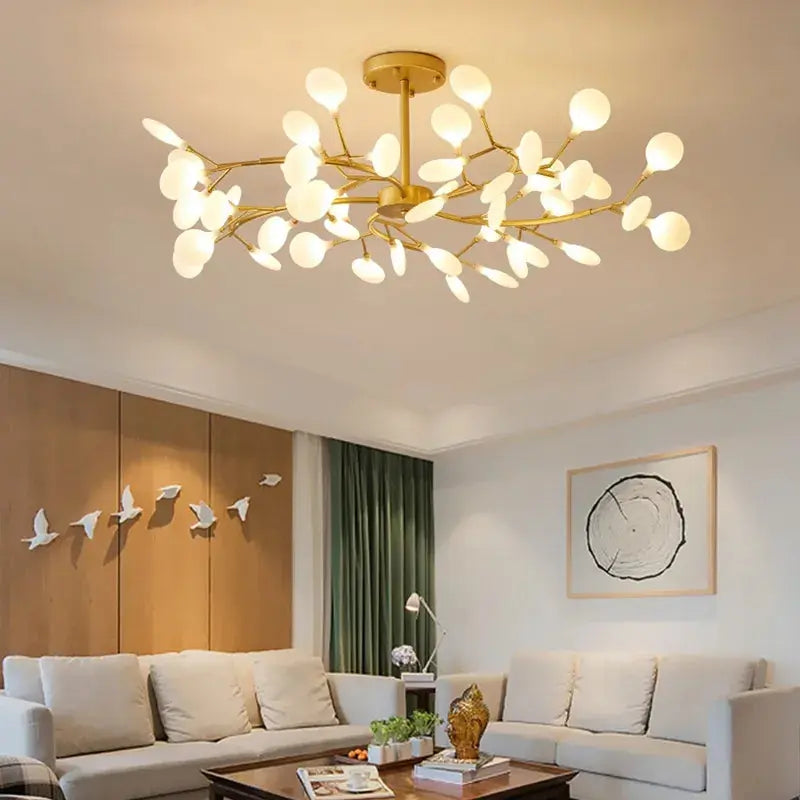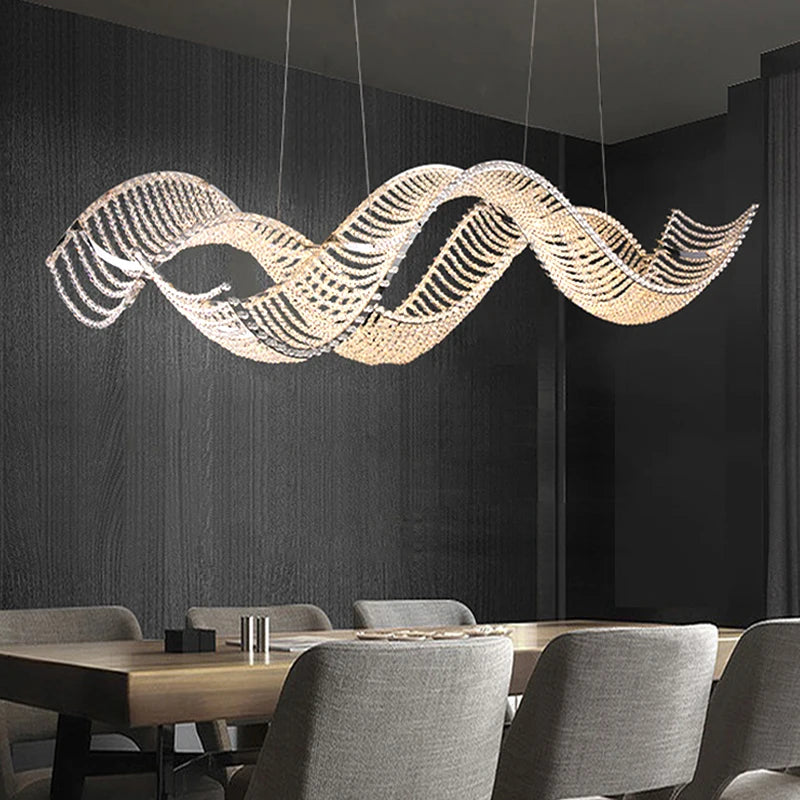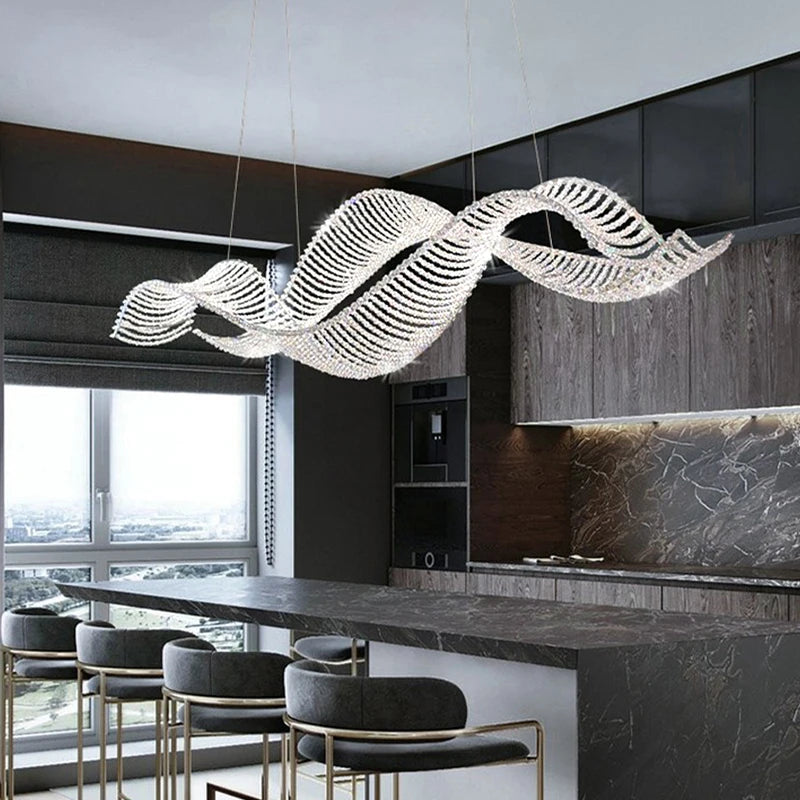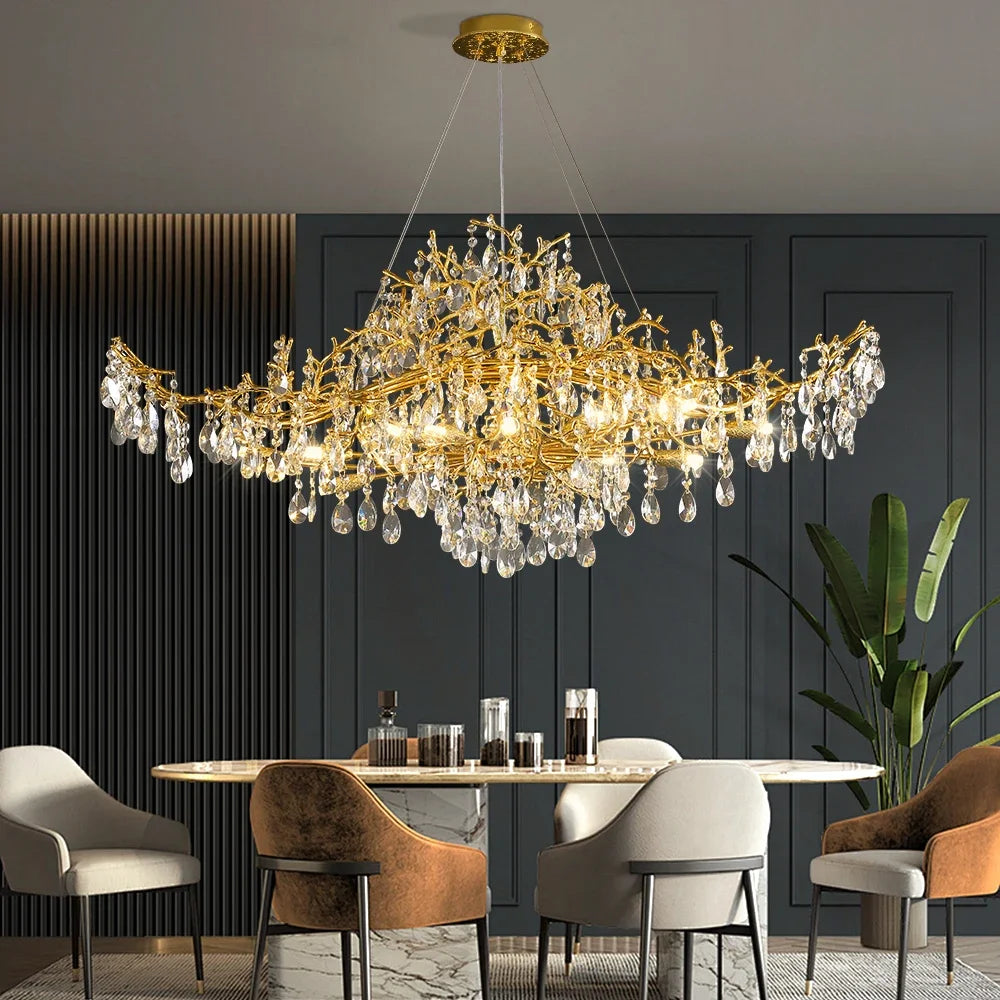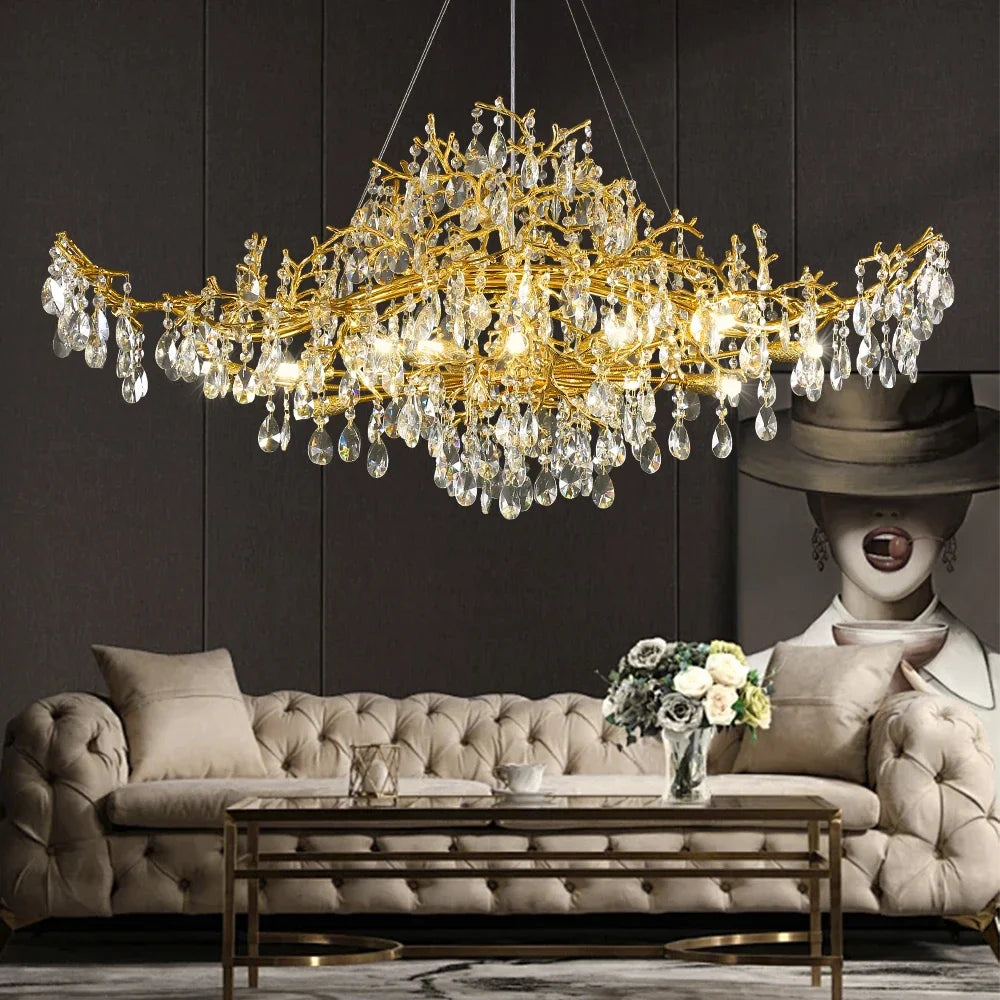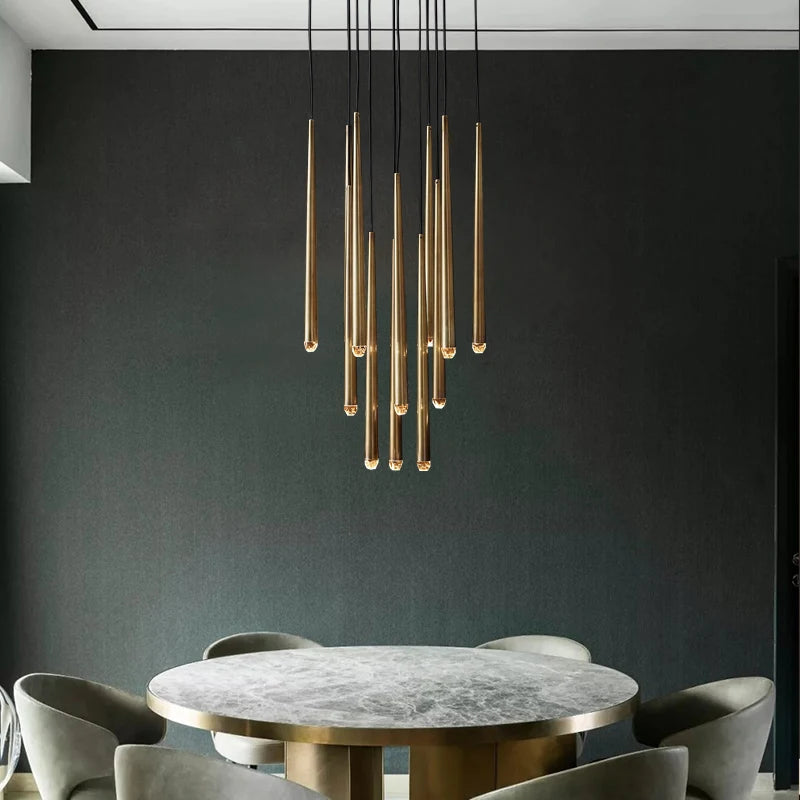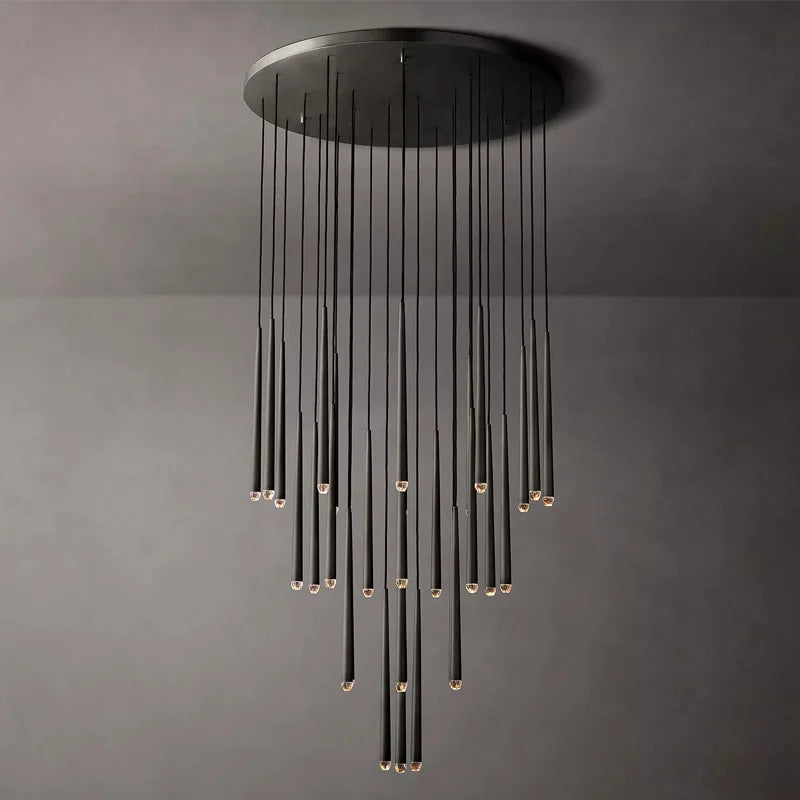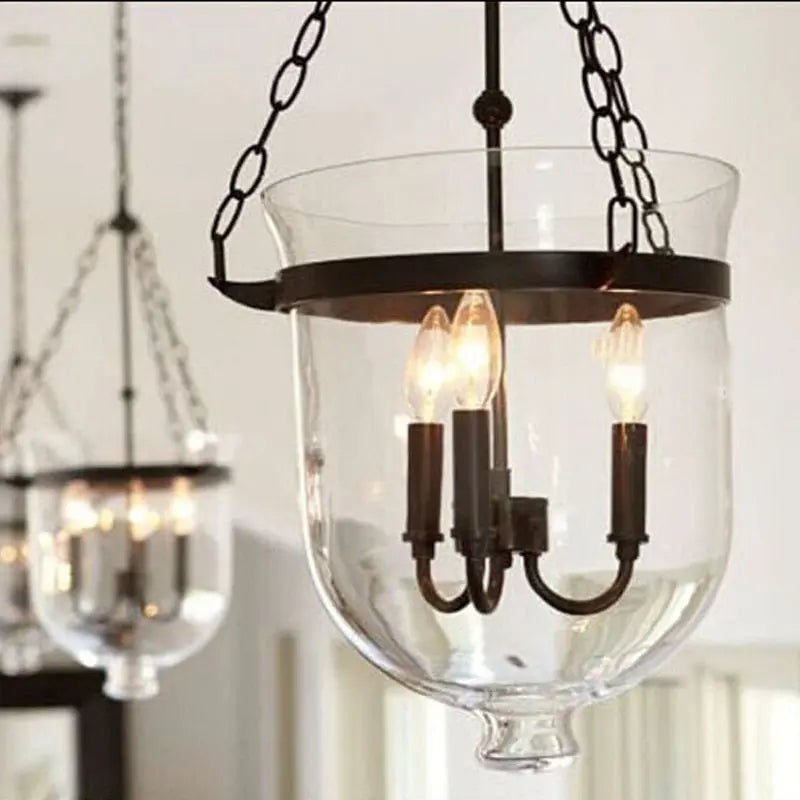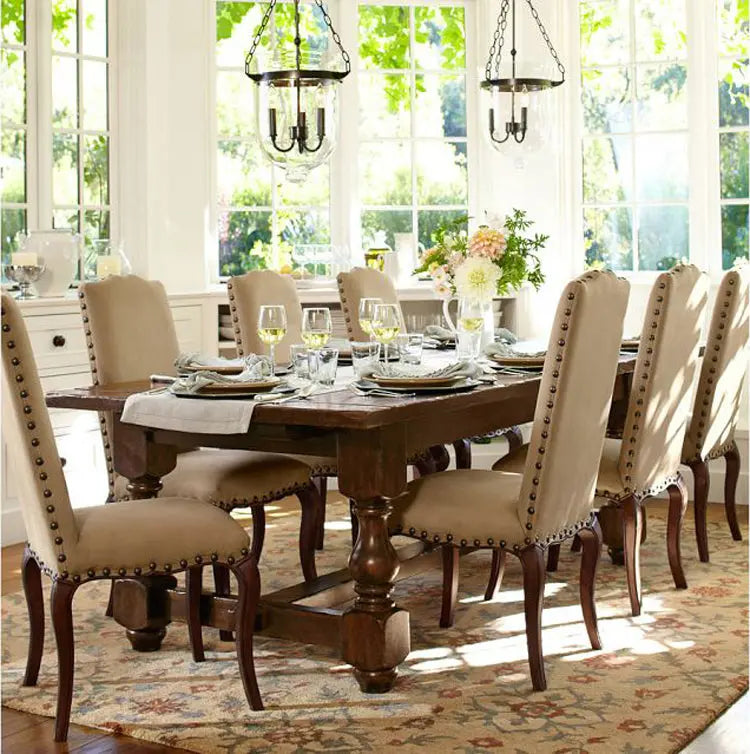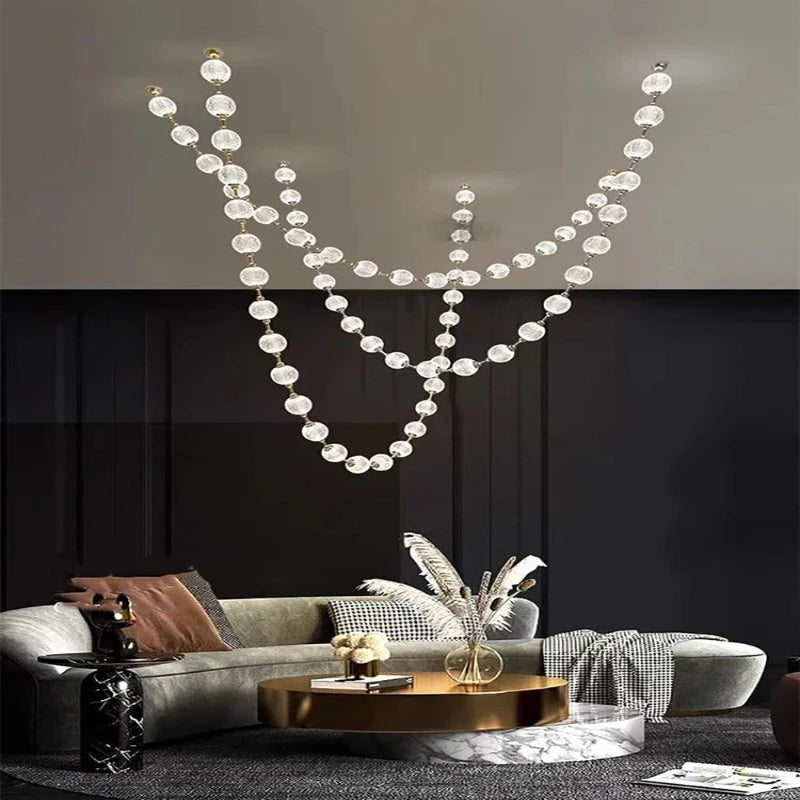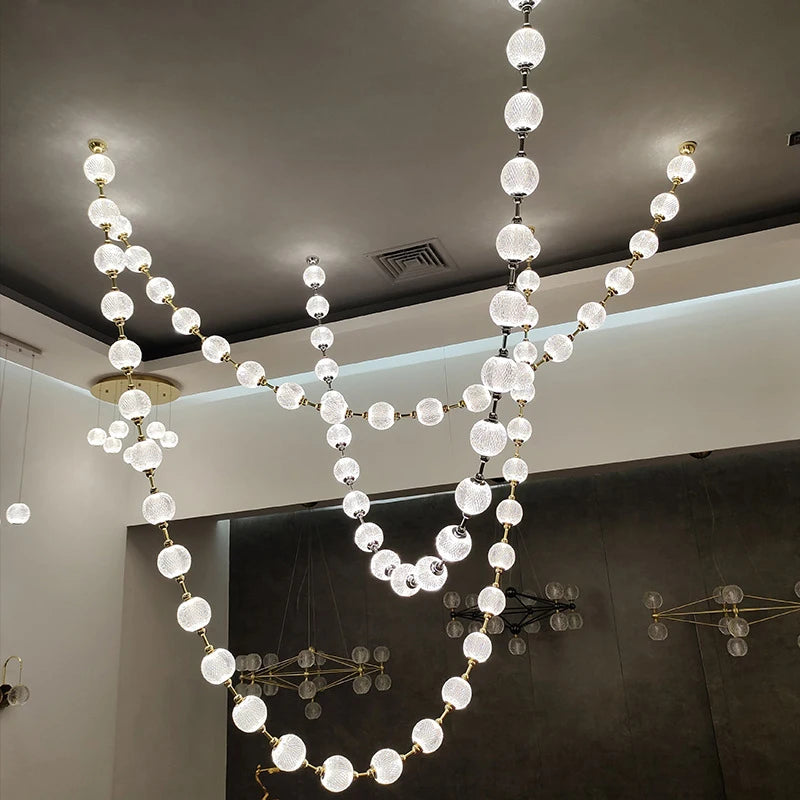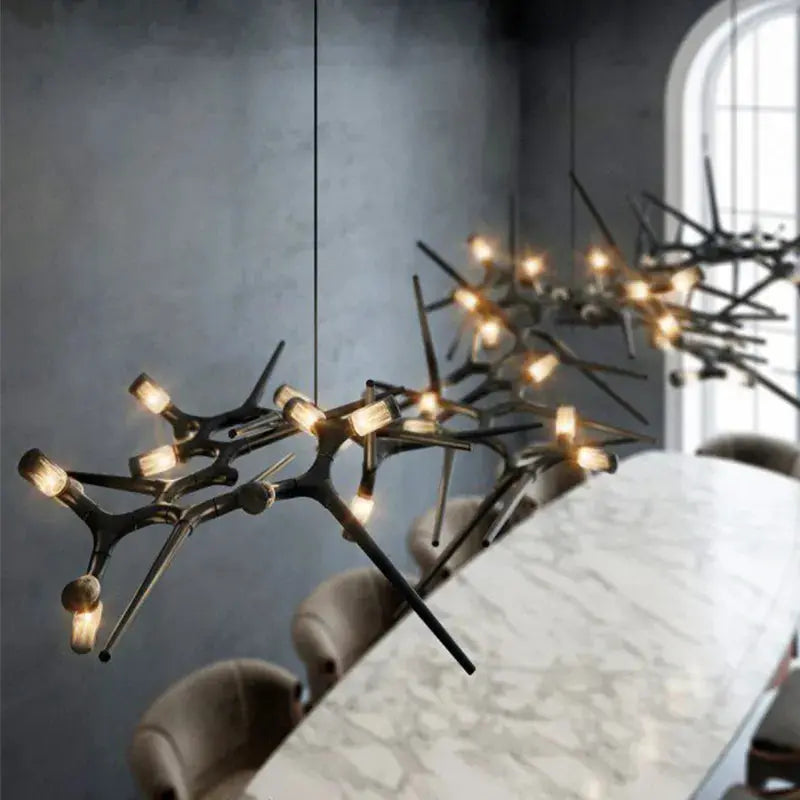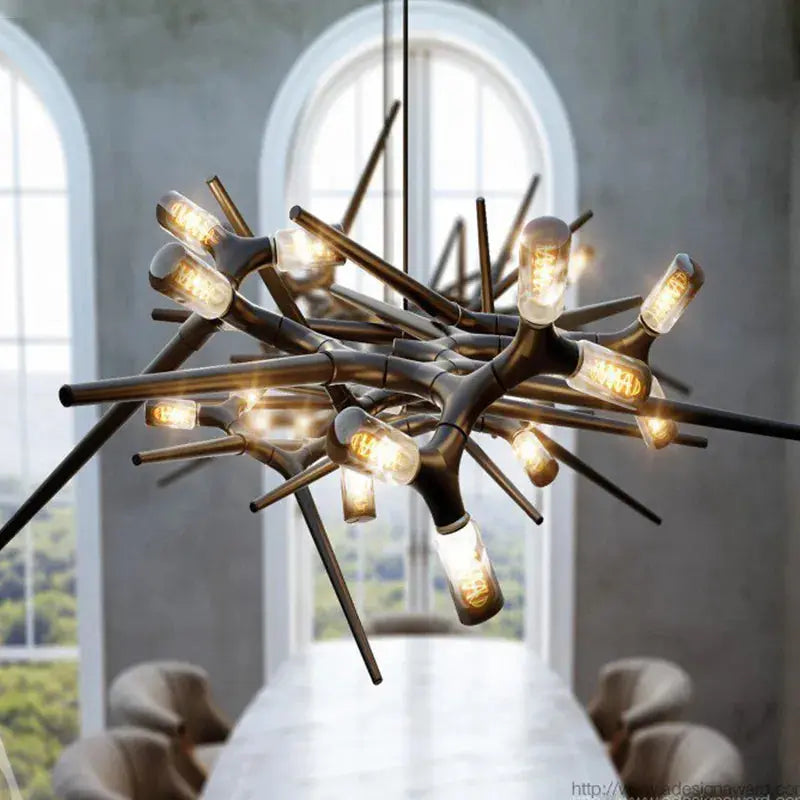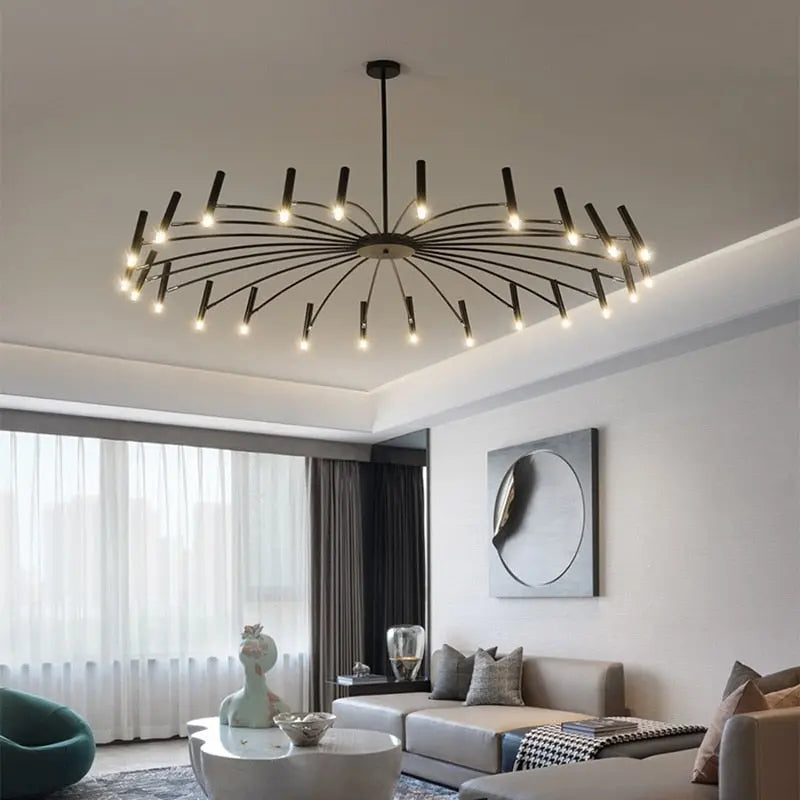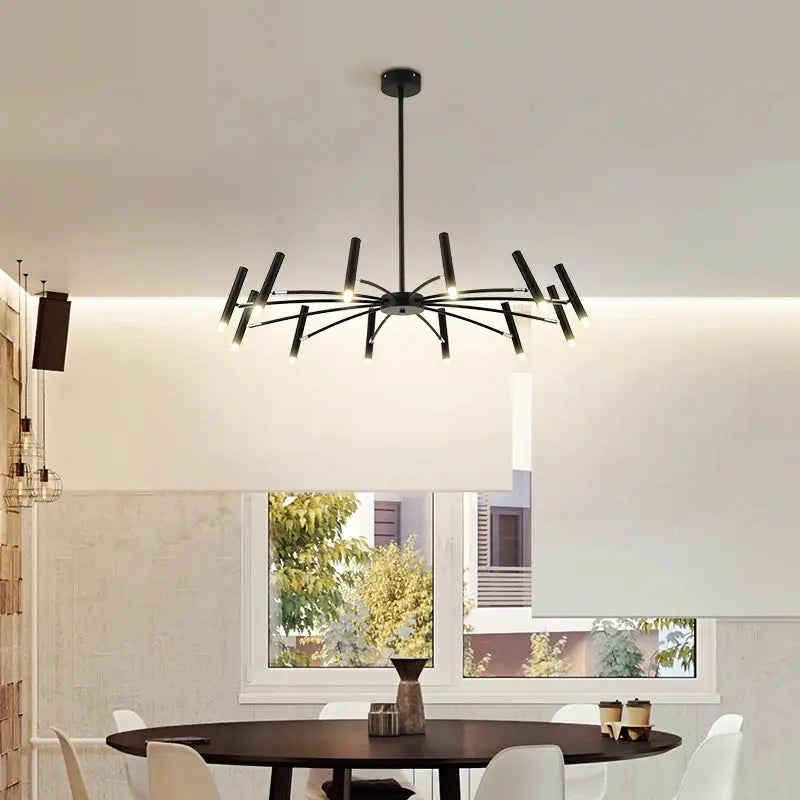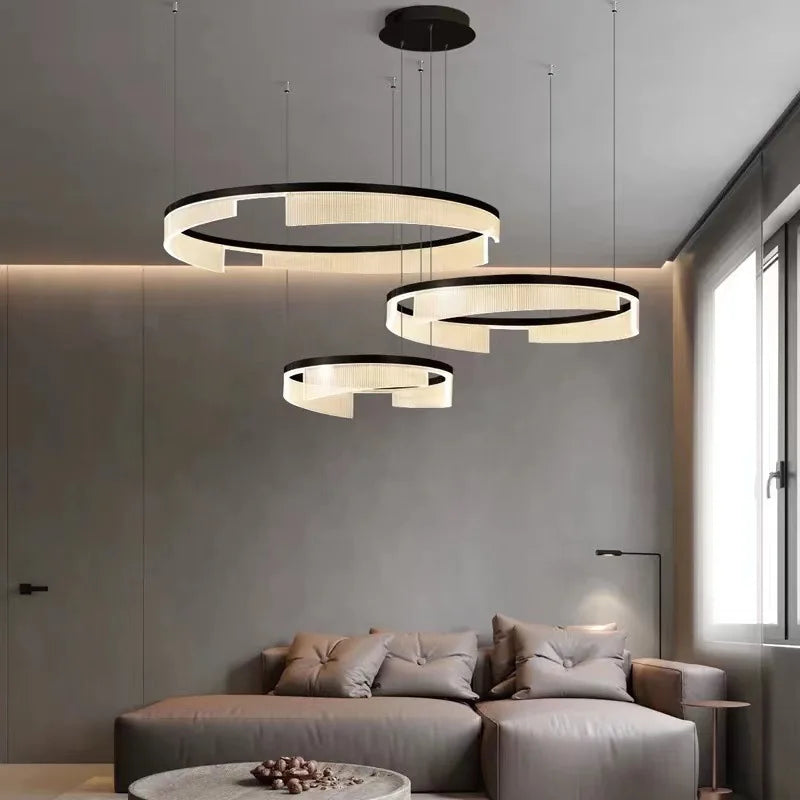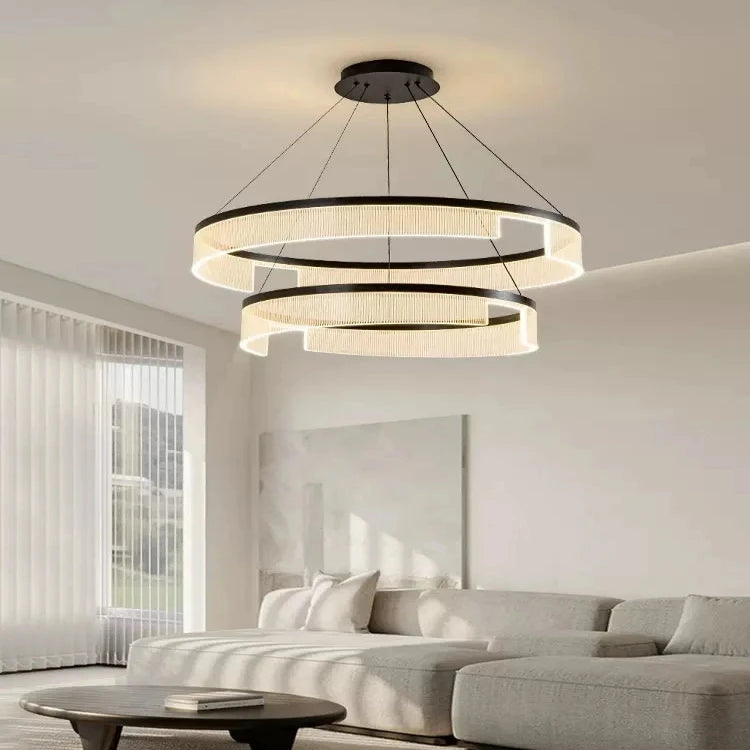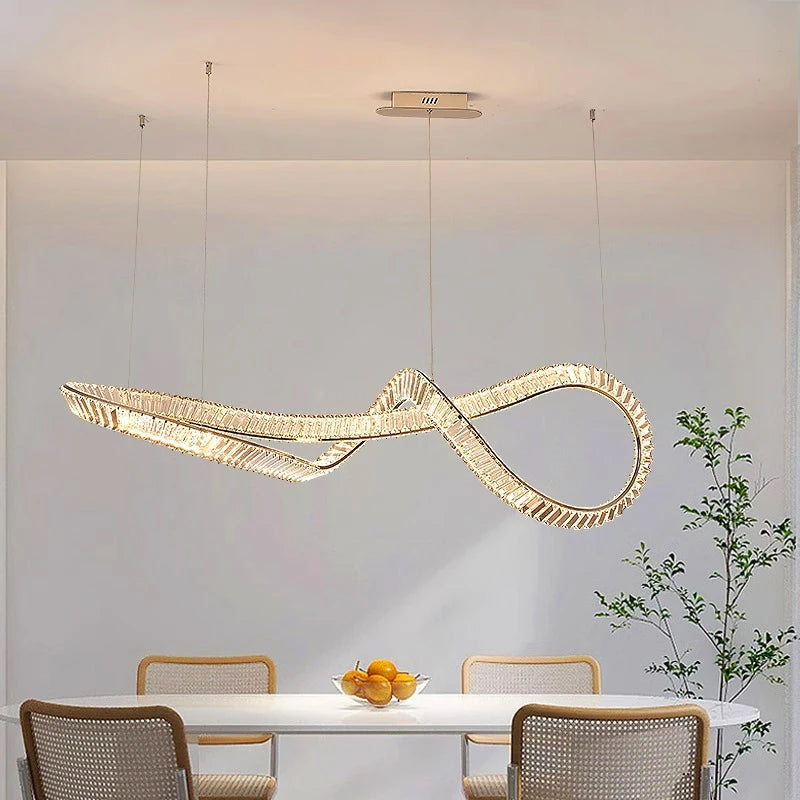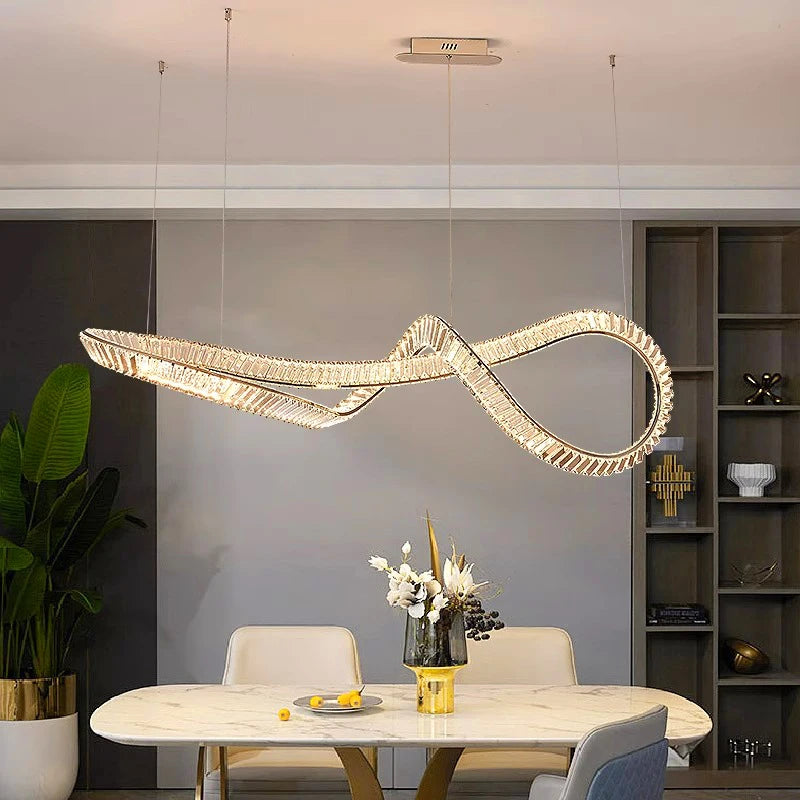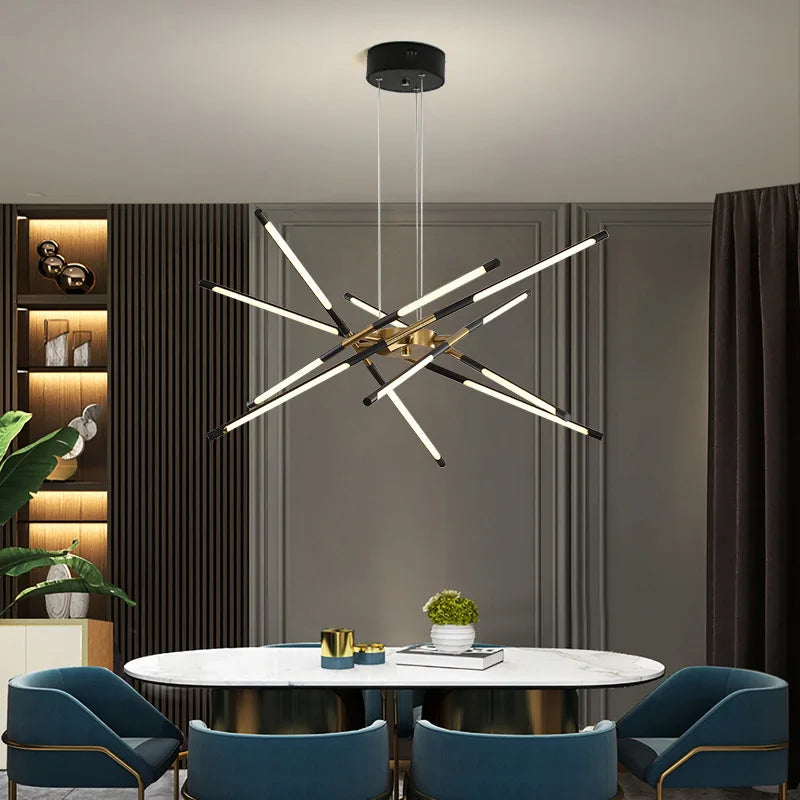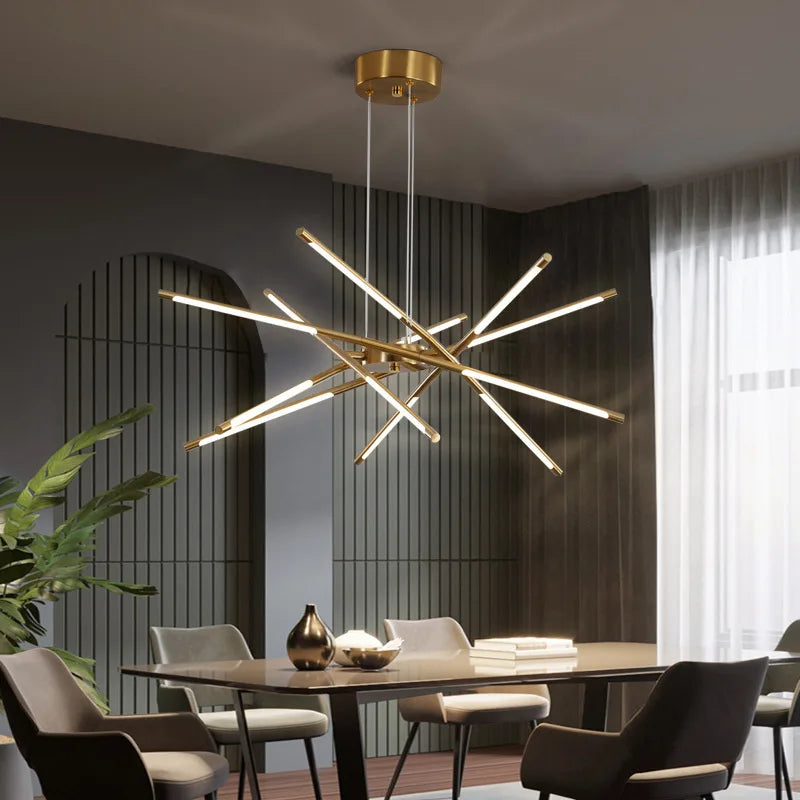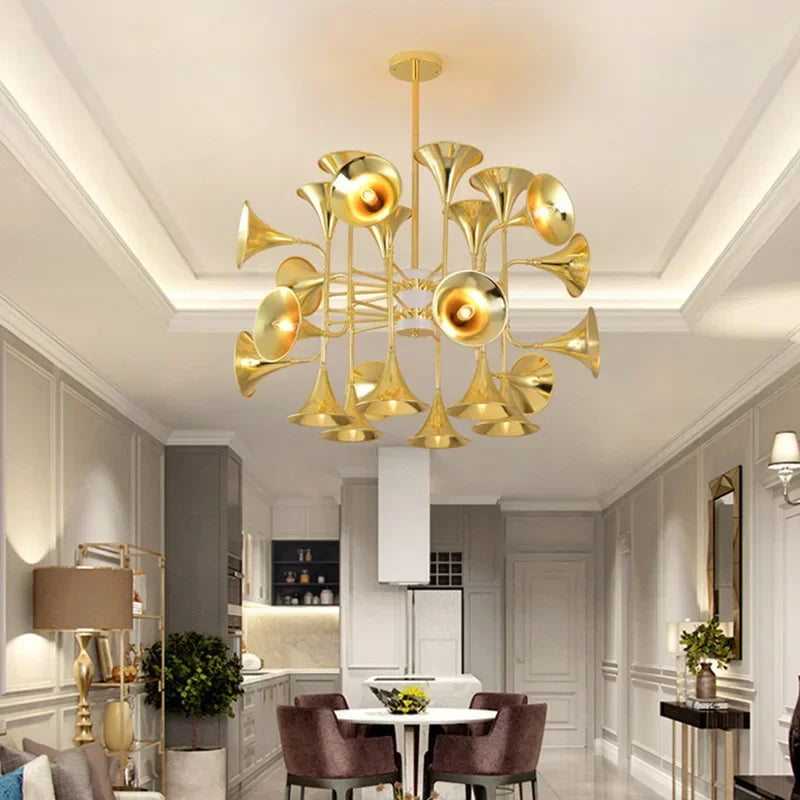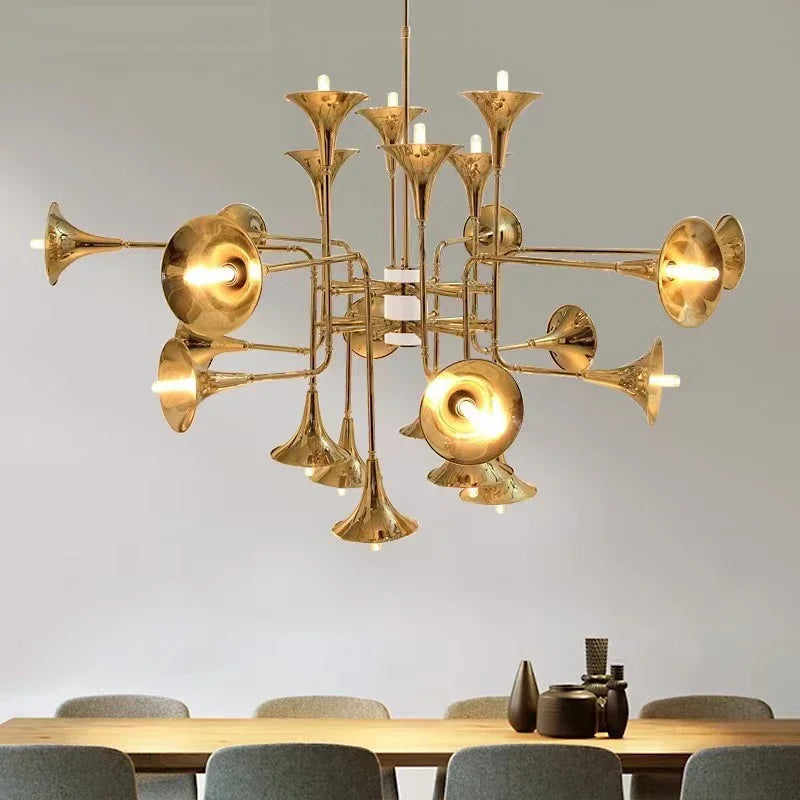HOW TO LIGHT A DINING ROOM
Start with the table: its shape and size should guide your main fixture. Round frames feel balanced over circular tables, while linear bars align with rectangular tops and open-plan islands. Keep sightlines clear to the far side of the room so conversations feel relaxed from every seat.
Scale & height: As an easy rule of thumb, choose roughly 1/2–2/3 of table width for round pieces, or 1/2–3/4 of table length for linears. Hang your centerpiece 30–36 in above the tabletop; in walk paths, maintain about 7 ft of clearance. For deeper tips on focal-point sizing and examples, see our Dining Room Chandelier guide.
Layer the light: A statement from our chandeliers sets the base, while targeted zones benefit from pendant lighting (over islands, buffets) and low-profile ceiling lights to even out shadows.
Color & control: Use 2700–3000K for warm dinners; step up to 3500K if you prefer a crisper feel. Pair integrated or bulb-based LEDs with a compatible dimmer to move from bright prep to candlelight mood without glare. Match finishes to nearby hardware so the room reads cohesive from entry to table.
Quick guidelines
- Round tables: one centered piece; add wall or floor accents to lift corners.
- Rectangular tables: linear or two smaller pendants spaced evenly.
- Ceiling height: use stems/chain to fine-tune drop; keep sightlines under chandeliers open across the seating group.
- Glare control: choose diffusers, shades, or frosted lamps; avoid bare high-output points at eye level.
Most orders include free worldwide shipping and 20-day returns. Not sure about drop length or driver compatibility? Contact us—our team is happy to help.

